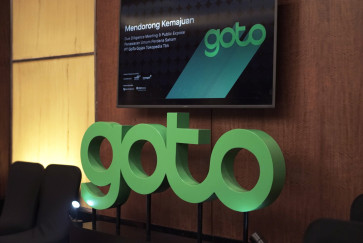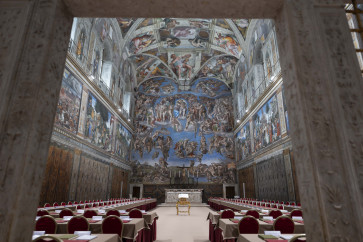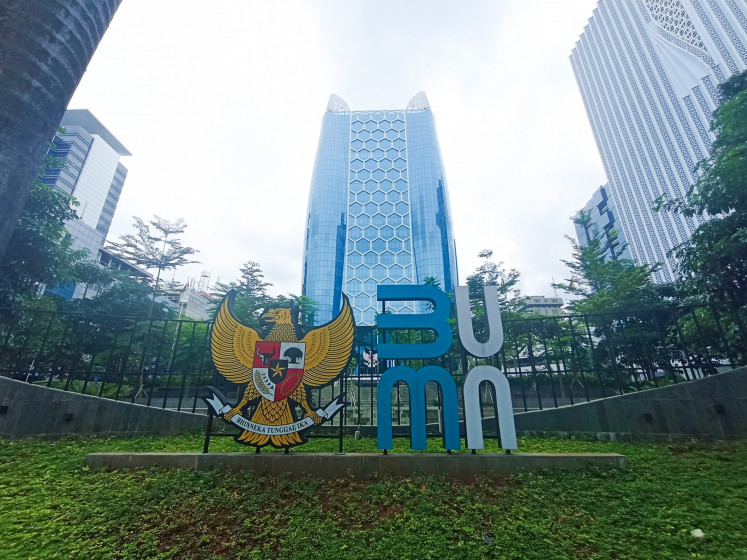Suropati Park’s centenary story of lost charm and glory
Welcome: The entrance to Suropati Park
Change text size
Gift Premium Articles
to Anyone

Welcome: The entrance to Suropati Park.
Over its 100-year history, Suropati Park has gone through many ups and downs.
The park, adjacent to the main thoroughfares of Jl. Diponegoro and Jl. Imam Bonjol in Central Jakarta, is an iconic landmark built by FJ Kubatz and FJL Gijshels under the direction of PAJ van Moojen, a Dutch architect who set up the now defunct Bataviasche Kunstkring (Jakarta Art Club) not far from the park.
The then-mayor of Batavia, the city’s name during the colonial era, GJ Bisschop, who was in office from 1916 to 1920, instructed the three men to build the park, which was then named Bisschopplein.
The park was officially inaugurated in 1919, meaning this year marks its centenary. In 1950, when Indonesia’s independence was formally acknowledged by the Netherlands, the government renamed the park Suropati Park.
The new name is a tribute to Untung Suropati (1660-1706), a former slave who became a commander during a war against Vereenigde Oostindische Compagnie (VOC), the Dutch company that began the process of colonialization that saw the Dutch rule the Indonesian archipelago for around 300 years.
Throughout the decades, Suropati Park has continued to be a green space in the middle of the bustling megalopolis.
Located in the elite area of Menteng, the park received the utmost care for its soil and aesthetics during its early years. Nearly 100 plant species, grown by Bisschop, were always well maintained, including mahogany, sawo kecik (caqui), ketapang (tropical almond) and tanjung (Spanish cherry).
From the 1970s to the early 1980s, the Jakarta administration allowed painting sellers from Bandung and Tasikmalaya in West Java to sell and showcase their artworks on the park’s sidewalks. At that time, the administration wanted to continue the legacy of Van Moojen, who wanted the park to be an artistic space for the common people.
“While the rich have their art house at Bataviasche Kunstkring, ordinary people have an art space at Suropati Park,” former Jakarta governor Fauzi Bowo once said.
In 1984, Suropati Park received added prestige, with the Jakarta administration placing statues by renowned artists from the ASEAN region there.

The statues carried the theme of friendship and a unified spirit among the ASEAN members.
The statues include Harmony by Awang Latif Aspar from Brunei Darussalam, Rebirth by Luis E. Yee Jr. from the Philippines and Fraternity by Nonthivathn Chandhanaphalin from Thailand, while Bandung sculptor Sunaryo made Indonesia’s contribution with Peace, an abstract depiction of two humans hugging each other.
The greenery, exotic plants and impressive statues made the park a popular recreation spot in the 1980s and this continued until the mid-1990s.
Suropati Park then turned into a site of terror from 1997 to 1998, when Indonesia was hit by a financial crisis that led to the downfall of military dictator Soeharto’s New Order regime.
The Soeharto family’s residence on the nearby Jl. Cendana became a target of those who sought revenge for the dictator’s iron-fisted 32-year rule. To provide protection, the roads around Jl. Cendana were blocked for a number of months.
Several platoons of soldiers also erected tents in the park, giving it the appearance of an emergency military base. Its beauty was ruined and its statues reduced to useless junk.
Following 1998, Suropati Park has lost much of its former charm and glory.
Nowadays, Suropati Park remains fertile and lush but has lost much of its aesthetic beauty and looks like a mere garden. The stone, metal and wooden statues are not properly cared for, with one even competing in appearance with a dirty pigeon coop.
The fate of Suropati Park has thus been starkly different from parks in other ASEAN countries. In these countries, parks are safeguarded as highly valued areas and valued as museums. (hdt)
— Photos by Agus Dermawan T.









